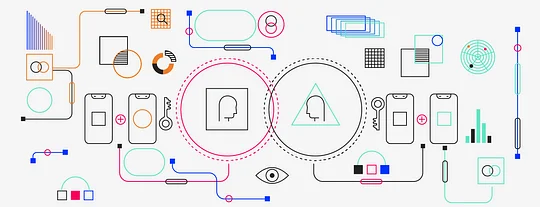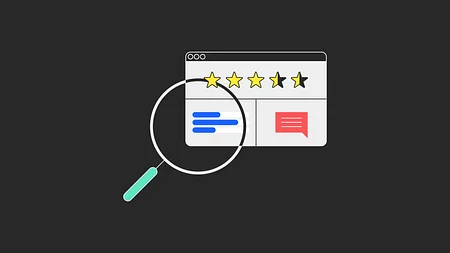What makes a successful fintech product partnership?

Businesses are slowly awakening to the idea that it's time to consider new sources of growth when it comes to securing their futures.
They’ve realised that, sometimes, designing the most engaging customer value propositions requires leaning on the brand strength of other players outside of your domain.
In fact, 94% of financial services institutions and 95% of tech companies agreed that fintech collaboration would help to improve their revenue over the next two years.
When it comes to both feasibility and viability, brands are starting to recognise that it’s smarter to re-focus on their own core competencies and choose to partner with businesses that plug their gaps rather than attempting to do both.
What’s driving this trend? 🚀
COVID + changing customer expectations = opportunity ✨
Customer expectations have changed dramatically over the last year or so. Expectations are so much higher of banks and of brands more generally, and what were once ‘nice to haves’ are now ‘must haves’.
COVID has of course accelerated the rate of digitisation, as it’s forced us all to reevaluate nearly every area of our lives - from home and travel to relationships and employment. Of course, these spheres are all underpinned by money, whether in an emotional or rational sense (even Mary-Kate Olsen had to jump on Zoom to finalise her divorce settlement in a virtual divorce proceeding...)
There are so many opportunities for product partnerships to address this unpredictability by offering a clear and supportive path forward for those forced into radical life changes, as well as for those stuck in limbo.
There are so many opportunities for product partnerships to address this unpredictability by offering a clear and supportive path forward.
It’s not just about features 🛠️
Simply achieving feature parity is not enough. Will Jones, our Head of Design, wrote about this recently in Unfiltered (subscribe here to get the next edition) and how brand relevance is a critical consideration.
Ultimately, success will lie in how businesses stitch together a digital experience composed of increasingly table-stake digital features. A partnership can help bolster how that end-to-end experience comes to life and help shape the contextual needs and moments in which it’s used by customers.
Profitability is key 🔑
With the fintech industry particularly ripe for disruption given the permanent move to online services, the challenge is that disruption needs to be profitable. But what does this look like in practice? Well, product partnerships that are open to integrating with each other's end-to-end user journeys, relinquishing full control over the customer, are likely to enjoy the most success.
The criticism of neobanks has been the high cost of acquisition vs. the low customer Life-Time Value (LTV). This becomes all the more concerning in the face of big tech partnerships with incumbent banks.
There’s increasing pressure for businesses to address this by offering more profitable services, such as credit and investments. However, other strategies - like addressing more lucrative markets or audiences and driving efficiencies with Banking as a Service - can be equally beneficial for creating new allies and building new partnerships.
Who’s doing it right? 🎯
Product partnerships provide business with new opportunities to take on competitors they might not have considered before. But ultimately, they’re all about working together to improve the customer journey.
So which financial services brands should we be looking up to?
Starling and Moneybox
Starling was the first neobank to break even and reach profitability. It’s a great example of a company leveraging its marketplace. For example, Starling partnered with Moneybox back in 2017 to offer its users seamless access to the saving and investing app in the hope that it would “help people manage their money more easily and effectively.”
Starling and PensionBee
Starling’s also benefited from focusing on more profitable segments, like SMEs. Just last week, it announced its partnership with PensionBee, enabling self-employed savers to set up a pension from scratch. It’s a win for PensionBee (they get to acquire existing Startling customers) and a win for Starling (being able to better support their SME customer base and provide a stronger proposition for an audience of sole traders in 2021). It’s also very culturally relevant in these times of instability and uncertainty which foster a stronger narrative around supporting small businesses and shopping locally.
HSBC and Tradeshift
This megabank might need much help with brand memorability, but HSBC still chose to partner with business commerce platform Tradeshift in 2017, a year after it invested in the firm. The benefit to customers was clear: to manage procurement, accounts payable, supply chain finance and more, all on one platform, helping them cut costs. For HSBC, it meant being able to provide added value services to the whole supply chain, and for Tradeshift, it meant improving its existing offering.
Lloyds and Thought Machine
In 2019, Lloyds Bank announced its partnership with Thought Machine in a bid to speed up its path towards digital transformation. Lloyds benefitted from applying tech innovation to meet its customers’ rapidly changing needs, while Thought Machine got to test and develop its core product, Vault, with the help of a global incumbent bank.
American Express and Foursquare
Foursquare teamed up with American Express in 2012, to help users of Foursquare to find participating stores in the app, and then save money by using their AmEx card at the checkout. While an unlikely joining of minds, the move allowed AmEx to leverage technology to create added value for its loyal customers and partners, and it helped Foursquare compete with other location-based offer schemes from the likes of Facebook.
Stay in your lane 🚗
Underpinning all of this is the recognition that you can actually go further, faster and more efficiently by focusing on your strengths.
But while you’re emphasising what you do best, you need to make adjacent allies. While it might seem counterintuitive, a focus on customer experience can require letting go of the desire to retain full control over a customer relationship. Success is contingent on a collaboration and breaking down silos (from the front and the back office).
A strong and stable partnership with a like minded partner should enable stronger relationships with your most loyal customers, too.
While it might seem counterintuitive, a focus on customer experience can require letting go of the desire to retain full control over a customer relationship.



